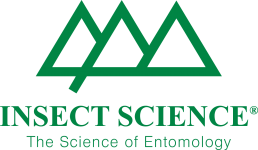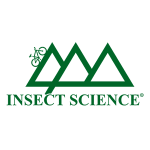Host plants
False codling moth has been recorded from an extensive range of host plants, including 24 commercial and 52 wild host plants. It is a major pest of cotton in equatorial Africa, sorghum in Central Africa and citrus in southern Africa. Deciduous fruits that have been readily infested by false codling moth are apricot, peach, plum, pear, grape, pomegranate and persimmon. It also attacks macadamia nuts, pecan nuts and walnuts.
Damage
Newly-emerged larvae enter fruit at any place on the fruit, although there is a tendency to enter at the stalk end. They tunnel to the centre of the fruit and feed mainly around the stone or core. Dark brown granular excreta is produced in the feeding area. Prior to emergence of mature larvae (illustrated) from the fruit, the excreta may be pushed out of the exit hole.
False codling moth’s pest status is determined mainly by winter temperature conditions and the presence of sufficient wild hosts to bridge the period when peaches are unavailable. It is thus a sporadic pest and infestation levels vary within and between seasons. It can be a serious pest of peaches, but only in the warmer production areas where citrus is grown in close proximity, or where there are sufficient other host fruits to sustain populations during the period when peaches are not available or susceptible to infestation. In areas with cold winters, very little damage to peaches is caused. Early-ripening peach cultivars usually escape serious infestation, as most populations that survive the winter are low, but late cultivars can be heavily infested. Its importance lies in its status as a quarantine pest, posing a serious phytosanitary threat to importing countries.
Management
Although false codling moth can inflict high levels of infestation, it is not considered a difficult pest to control. A pheromone monitoring system can be used to obtain accurate information on flight activity, and whether the pest is present at the stage of fruit maturity when infestation can take place. Control can be effectively implemented using insecticides. Female moths are only attracted to ripening and ripe fruit, resulting in a relatively short period that the fruit has to be protected. Early peach cultivars need only be protected from 4-5 weeks prior to harvest, and mid-to-late season cultivars from 6-8 weeks before harvest. Thorough spraying and effective coverage of leaves, and particularly the fruit, is required.






